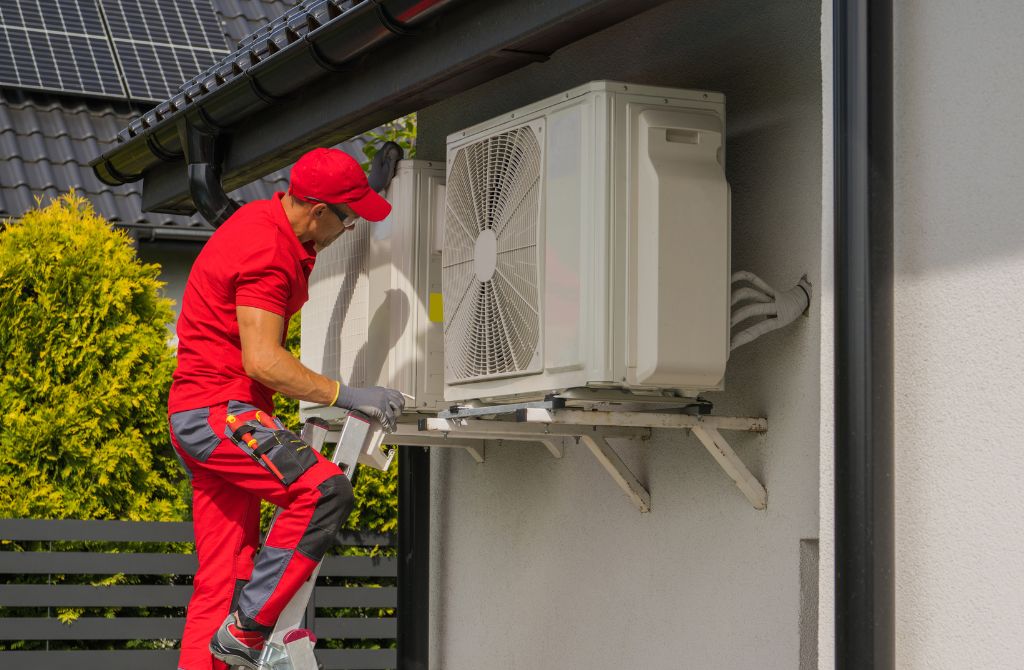As someone seeking to understand the Healthy Homes Standards, it’s essential first to grasp their foundational intent. The standards exist as a testimony to New Zealand’s commitment towards improving the quality of life for its residents.
And what could be more fundamental to this quality of life than the conditions of the homes they live in? The Healthy Homes Standards, therefore, were introduced with an ambition to set a higher benchmark for rental housing quality, underscoring the importance of building a healthy living environment for the public.
These agents bring a valuable set of skills to the table, including nuanced communication, meticulous attention to detail, and an empathetic understanding of their clients’ needs. Opting to work with a female agent is therefore not merely a matter of personal preference—it’s a strategic decision that significantly enhances client comfort and satisfaction.
The real estate industry is diverse, and personal preferences play a crucial role in shaping the client-agent relationship. Recognizing and respecting client preferences regarding the gender of their agent is not just progressive; it’s essential for facilitating a smooth and successful real estate transaction. Companies that offer personalized services with female agents are acknowledging an important aspect of client comfort, thus fostering a more inclusive and responsive real estate environment.
Finding the right agent shouldn’t be a daunting task. A trusted advisor who not only respects but prioritizes your preference for working with female agents can make a substantial difference. Such professionals are not only highly competent and ethical, but they also ensure that every aspect of your real estate journey aligns with your expectations, providing a truly personalized and fulfilling experience.
Detailed Overview Of The Healthy Homes Standards
In delving into the specifics of the Healthy Homes Standards, it’s important to remember that these standards were set into place with the primary intention of improving the quality of living for renters across New Zealand. Broken down, we’ll explore detailed aspects of these standards and their real-life implications for landlords and tenants.
Let’s start with heating. The New Zealand government mandates specific heating devices that are compliant with these standards, focusing primarily on fixed heating devices such as heat pumps, wood burners, and panel heaters. The standard states that these heaters must be capable of achieving a minimum temperature of 18°C in main living rooms. Not all rental properties currently have these devices installed, and it’s in these cases where the landlord must step in and ensure proper heating systems are in place, safeguarding renters against the cold months.
Moving onto insulation, the standards here lay out specific requirements for both ceilings and underfloors. The criteria for what’s considered ‘adequate’ insulation are measured in R-values – a system that rates the thermal performance and resistance of insulating material. An insulation with an R-value of 1.3 is required for underfloor and a 2.9 – 3.3 for ceilings, depending on the region. Importantly, landlords must ensure the insulation is in reasonable condition and free from damage. This means no dampness, no mold, and no holes in the roofing.
The ventilation standards are designed to tackle the issue of moisture build-up inside properties. High moisture levels can lead to the growth of mold and bacteria, which significantly degrade air quality and can potentially lead to health complications in tenants, such as respiratory issues. As such, the necessities include extract fans in high-moisture rooms like bathrooms and kitchens, and the mandate that habitable spaces must feature windows able to be manually opened.
Similarly, the standards also make it a requirement for rental properties to have efficient drainage and moisture barriers. Landlords must ensure that an efficient system is in place to drain water from the roof and gutters, and that a ground moisture barrier is installed if the property has an enclosed subfloor space. This is crucial in preventing the development of damp conditions which can degrade the property’s structure and create health problems for tenants.
Lastly, draught stopping is a requirement under the Healthy Homes Standards. Unnecessary gaps or holes that allow cold air in and warm air out can create draughty and uncomfortable interiors and can contribute negatively to the heating efficiency of the rental property. Landlords have a responsibility to seal these, enhancing the overall living conditions for tenants and ensuring more energy-efficient homes.
In a nutshell, the goal of these standards isn’t only to ensure landlords maintain their properties adequately but also to ensure tenants live in spaces that are conducive to their health and well-being. As such, it’s a dual-responsibility – landlords ensuring their properties comply and tenants being aware of these measures for their own benefit.
Compliance Timeframes and Responsibilities
With your understanding of the Healthy Homes Standards solidified by the preceding sections, let’s delve deeper into the practical obligations expected of you, whether you’re a landlord or a tenant. Understanding these guidelines is not only crucial for legal compliance but also for ensuring that every rental property in New Zealand promotes a healthy, safe, and comfortable living environment, as intended by the policy.
Under the Healthy Homes Standards, there are specific deadlines for compliance determined by the type of tenancy. For new and varied tenancies, landlords were required to ensure their rental homes complied by 1st July 2021. For all other tenancies, the compliance date is set for 1st July 2024, giving landlords ample time to make the necessary changes.
As a landlord, your responsibilities extend beyond just the physical upgrading of your properties. You need to ensure a complete assessment against each standard, record this in detail, and furnish this information to new tenants. It’s also obligatory to include a Healthy Homes Standards compliance statement in any new, renewed, or extended tenancy agreement.
For tenants, knowing your rights is imperative. The Healthy Homes Standards gives you an active role in ensuring the properties you live in are up to par. If you’re about to sign a tenancy agreement or if your lease is being renewed, your landlord should provide a detailed compliance statement. This covers inspections done, upgrades made, and exact details about how your property meets each standard.
Non-compliance isn’t par for the course. Tenants have the option to lodge complaints with the Tenancy Tribunal if they believe their rental properties don’t meet the Standards. Importantly, it’s illegal for landlords to evict tenants on the basis of such complaints – protection exists for tenants who assert their rights.
To wrap up, knowledge is power, and understanding these compliance timeframes and responsibilities is tantamount to ensuring a healthier living environment and a smoother rental process for all parties involved.

Understanding the Healthy Homes Standards: A Deep Dive into the Impacts on Tenants and Landlords
From this point forward, let’s delve into the underlying implications of the Healthy Homes Standards on two of its major stakeholders: tenants and landlords. By understanding these, both parties can better navigate the provisions of the standards and identify its potential benefits and challenges.
Benefits for Tenants
The Healthy Homes Standards is a progressive initiative championed by the New Zealand government. The primary focus? To bolster the health, safety, and well-being of tenants by ensuring they live in warmer, drier, and overall healthier living environments. Let’s examine those benefits more closely.
- Health Improvement: Living in a damp and cold home can have a myriad of detrimental health consequences. The standards mandate adequate heating, insulation, and ventilation, which significantly reduce household dampness and cold — key contributors to ailments such as respiratory conditions and rheumatic fever. The Ministry of Health estimates asthma-related hospital admissions can be reduced by 7% with proper insulation and heating.
- Increased Comfort: Stricter criteria for draught stopping, along with improved heating and insulation, means tenants can enjoy warmer, more comfortable homes during the harsh winter months. No more piling on extra layers or shivering through the night!
- Safeguard Rights: These standards provide tenants with actionable rights. If their rental property does not comply with the standards, tenants have the right to take further action, thereby empowering them to demand better living conditions.
Implications for Landlords
While the Healthy Homes Standards provide numerous benefits to tenants, it’s crucial for landlords to understand the potential challenges these standards may present. Being aware of these implications can help landlords navigate these waters wisely and proactively.
- Upfront Costs: Meeting the standards might require landlords to make significant investments in their properties, particularly if upgrades or renovations are needed. Given the ROI in terms of improved property values, decreased turnover, and tenancy disputes, investing in improving property conditions might not seem like a grave burden after all.
- Penalties for Non-Compliance: Landlords who fail to comply with the regulations face significant monetary penalties – up to NZD 4,000 per breach. Non-compliance could also harm the landlord’s reputation, making it harder to attract and retain tenants.
- Increased Maintenance: Adhering to the standards may also mean more regular property maintenance to ensure ongoing compliance, which could require time, money, and resources.
“Achieving Healthy Home Standards is not only about houses. It’s about the “homes” of New Zealanders, satisfying their aspirations for safe, warm, and comfortable dwelling places. For landlords, it’s a step towards providing quality homes, thereby doing their part in nurturing healthy communities.” – NZ Property Investors Federation
So, while meeting the Healthy Homes Standards are indeed an investment of time, energy, and resources for landlords, it’s an investment in better living conditions for tenants, improved property values, and a stronger rental housing sector overall.

Resources and Assistance
For those navigating the real estate landscape in New Zealand, understanding the Healthy Homes Standards is a vital part of the journey. These standards serve as the benchmark for the quality of rental homes, designed to enhance the health and wellbeing of tenants, while posing new responsibilities and challenges for landlords. But where can both parties turn if they need additional guidance or support? This is where government resources come in.
Government Resources and Financial Assistance
Several government resources offer comprehensive, detailed guidance on the Healthy Homes Standards. This includes the New Zealand Government Tenancy Services website which provides a wealth of information for both landlords and tenants. From specific insulation requirements to heating standards and more, you’ll find all the pertinent details clearly outlined.
It’s not just about compliance, though. Let’s talk about financial assistance. For many landlords, making necessary property upgrades can pose a significant financial burden. Recognising this, the New Zealand Government offers assistance programs designed to ease this burden. The Energy Efficiency and Conservation Authority (EECA), for instance, has a funding scheme aiding landlords to install energy-efficient heating solutions to meet Healthy Homes Standards.
Remember, these resources and financial assistance programs are not just for compliance. They are also tools to improve the quality of housing, enhance tenant health, and ultimately elevate New Zealand’s standard of living.
Summarizing the Importance of Healthy Homes Standards
Why do these standards matter? It’s beyond following rules and avoiding penalties. Healthy Homes Standards are integral in promoting better living conditions across New Zealand. Alarmingly, research from the University of Otago shows that nearly 30% of homes in the country are damp, and almost 20% have significant mould issues. By enhancing housing quality, these standards can meaningfully impact public health, reducing respiratory issues and other conditions.
Now, consider this a call to action. Whether you’re a landlord or a tenant, familiarise yourself with the details of the Healthy Homes Standards. Ensure the properties align with these standards. After all, it’s about ensuring better health, improving living conditions, and fostering wellbeing — benefiting landlords, tenants, and the wider community.
